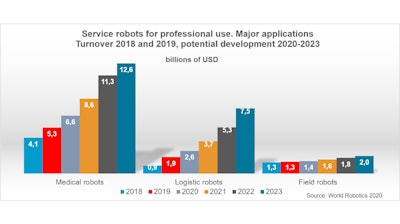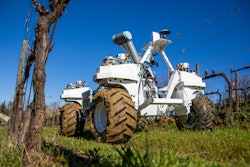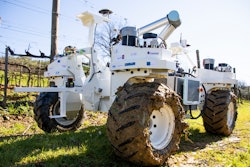
According to the "World Robotics 2020 - Service Robots" report from the International Federation of Robotics (IFR), the sales value of professional service robots increased 32% from 2018-2019. This equated to a worldwide value of U.S. $11.2 billion.
Demand was high for disinfection robot solutions, as well as those for logistics, factories and warehouses, and home delivery. And the COVID-19 health crisis is anticipated to further boost the service robots market.
Logistics robots a growing sector
The report indicates the market value for logistics robots sold or leased was up 110% to U.S. $1.9 billion. Almost all of the logistics turnover was generated with robots for indoor use.
Autonomous mobile robots have initially been used in warehouses but with digitalization of production, they are also part of today’s smart factory. Therefore, a continued strong turnover growth of 40% or more per year seems possible. “The investment in service robots for logistics in manufacturing processes is amortized rapidly,” says IFR President Milton Guerry. “Assuming 24-hour operation, the investment in service robots for logistics may be repaid within 2‐3 years and often much quicker. Given a 15-year lifetime, operating costs are around 5% of the annual investment. Highly developed systems often provide operational availability in the 98% plus range.”
The trending Robotics-as-a-Service (RaaS) business models lower the hurdle for customers to automate with robots. The benefit is not to invest in hardware, so the companies have no fixed capital, no fixed costs and no need for robot operators. The use of logistics systems in non-manufacturing industries has been strongly driven by warehouse solutions for major e-commerce companies. A strong potential can also be found in hospitals running their logistics with the help of professional service robots. In the segment of professional service robotics, about 90% of the sampled logistics robots were produced in Europe and North America - about 10% in Asia.
 International Federation of Robotics
International Federation of Robotics
Professional service robots in the field
The segment of field robotics consists of robots for agriculture, dairy, livestock farming and other field applications. Sales value increased by 3% to U.S. $1.3 billion according to the report.
The COVID-19 pandemic might have an impact for further supply of such robots. Travel restrictions for workers from Eastern Europe for instance, who usually travel to Western Europe in harvest season, caused a shortage of labor supply. Farmers might compensate for this with the use of field robots.
Sales value growth rates of more than 30% for agricultural robots seem possible.
“We expect sales of both professional and personal service robots will continue to increase strongly,” says Milton Guerry, President of the International Federation of Robotics.
![Hcm Ax Landcros Press Release[32] jpg](https://img.oemoffhighway.com/mindful/acbm/workspaces/default/uploads/2025/11/hcmaxlandcros-press-release32jpg.mAEgsolr89.jpg?auto=format%2Ccompress&fit=crop&h=100&q=70&w=100)







![Hcm Ax Landcros Press Release[32] jpg](https://img.oemoffhighway.com/mindful/acbm/workspaces/default/uploads/2025/11/hcmaxlandcros-press-release32jpg.mAEgsolr89.jpg?ar=16%3A9&auto=format%2Ccompress&fit=crop&h=135&q=70&w=240)









